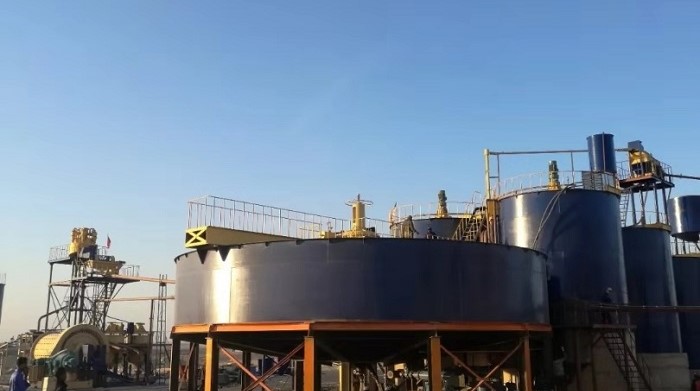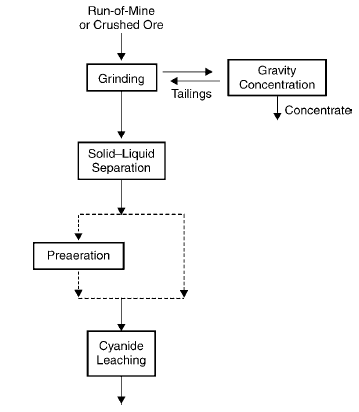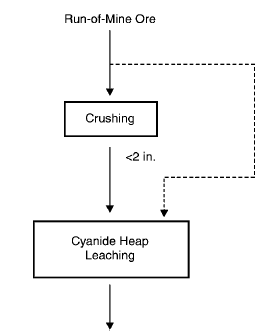Oxidized gold ores are generally produced as natural gold or silver-gold ores alone. The ores are relatively loose and contain less sulfide. The ore dressing method is usually by leaching method.

Figure 1 depicts a flowsheet for processing free-milling oxidized gold ore. The kinetics of gold leaching is slow, and gold ores are frequently ground to less than about 75 μm before leaching by ball mill. Even then, one day is usually required in the leaching step. In this process, run-of-mine ore is crushed and ground. The ball mill discharge in subjected to gravity concentration to recover the larger particles of free gold. The tailings from this operation are thickened, and the underflow from the thickeners is then subjected to cyanide leaching. In some instances, ores may contain oxygen-consuming minerals, such as pyrrhotite and marcasite, and a preaeration step may be conducted ahead of cyanide leaching.

Fig1.Flowsheet options for grinding and agitated leaching of free-milling oxidized gold ores
Heap leaching has revolutionized the gold mining industry. Low-grade oxidized ores containing approximately 0.03 oz gold per short ton of ore can be processed with this technology, whereas they could not be processed by the higher cost grinding/agitation leaching (milling) process. Figure 2 presents a simplified flowsheet of heap leaching. As the figure shows, run-of-mine ore may or may not be crushed. If crushing is done, the ore is generally crushed to -50mm in diameter.

FIGURE 2. Flowsheet for heap leaching of oxidized gold ores mineral processing

 English
English Español
Español 简体中文
简体中文